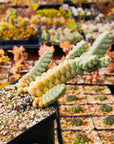
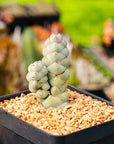
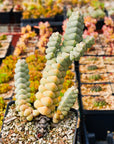
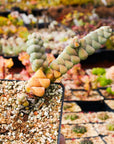
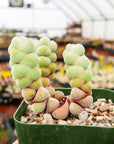
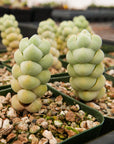
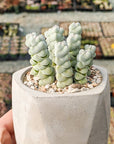
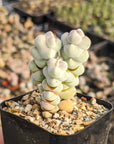
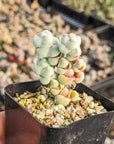
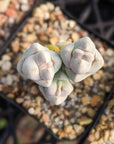
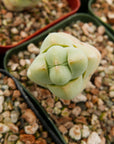
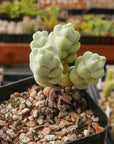

Crassula plegmatoides
This is a rare, sculptural Crassula native to a narrow coastal strip in South Africa and southern Namibia, where it grows among quartz gravel on dry, exposed hillsides. It forms compact, four-angled columns of rounded grey leaves that stack tightly around the stem, with a texture like soft stone or matte ice cream cones.
Stems reach up to 6 inches long and tend to lean or sprawl with age, often rooting where they touch the soil. Plants usually grow as a single column, but may occasionally branch at the base. The leaves stay tightly stacked when grown in bright light and dry conditions, and the shape gets looser if overwatered or shaded.
It’s a spring and fall grower that prefers bright filtered light, very fast-draining soil, and minimal water during summer dormancy. In cultivation, it may bloom in late summer to fall with small cream-colored tubular flowers on short stalks.
This species is slow-growing and not often seen in cultivation—ideal for growers who appreciate strange forms and fine details.
Light Level
Water
Shipping Notes













